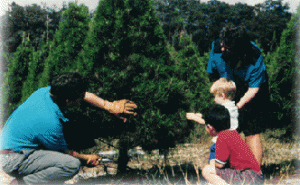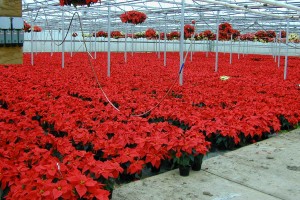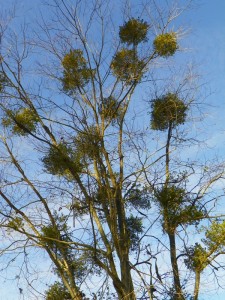The History of Your Favorite Holiday Plants
Break out the extension cords and Christmas lights. It’s that time of year again! Christmas time is ripe with excitement and tradition. Although you may not have realized it, plants are a big part of that tradition. From Christmas trees to Christmas cactuses, there are many iconic plants that announce the coming of the season. Here is a brief history of some of your favorite holiday plants:
Christmas Trees:
Did you know that for millennia people have used evergreen trees in their winter celebrations? From the Egyptians to the Romans, evergreen trees carried special meaning, representing the triumph of life over death. Often times, it was used in association with the winter solstice on December 21, which is the shortest day and the longest night of the year. It reminded people that despite the frigid winter, spring was sure to come. Our modern Christmas tree tradition began in Germany in the 16th century as Christians would bring evergreen trees into their home. Martin Luther is often credited with adding lights to the tree. Legend has it that he enjoyed the way stars twinkled through trees at night so he added candles to his family’s tree. Despite Puritan disapproval, Christmas trees became popular in the United States when large populations of Germans and Irish immigrated in the 19th century. Today, the Christmas tree is one of the most notable symbols of the season.
Poinsettia:
The poinsettia plant (Euphorbia pulcherrima) is rich with Christmas history. It was brought to the United States by our first Ambassador to Mexico, Dr. Joel
Poinsett, a historian and amateur botanist. The Mexican legend tells the story of two young children, who loved Christmas but were poor and had no present to give to Baby Jesus. On Christmas day, they went to church and picked weeds along the way as a makeshift gift. When they put them in the manger, the weeds turned into beautiful plants with bright red petals shaped like stars. The poinsettia plant was termed the “Flower of the Holy Night,” in Central America and to this day adorns our homes and churches each Christmas.
Mistletoe:
Similar to the Christmas tree, mistletoe (Phoradendron flavescens) was thought to be sacred because of its evergreen nature. Some cultures believed that its berries had medicinal qualities but be careful because some species actually have poisonous berries! The history of kissing under the mistletoe goes back to Scandinavia, where people saw mistletoe as the plant of peace. If you found yourself standing under mistletoe with your foe, you must give a sign of peace. Kissing under the mistletoe is our modern interpretation of this Scandinavian tradition. One misconception about “standing under the mistletoe,” is that mistletoe is a type of tree. Far from the modern romantic view of mistletoe, it is not a tree but a parasite! It often lives in the branches of a host tree, making it possible to “stand under the mistletoe.”
So, when you are decking your halls with mistletoe or decorating your tree this year, remember that for thousands of years, people have been celebrating winter with these evergreen plants. From all of us here at John Madison Landscape, we would like to sincerely wish you and your family a very Merry Christmas season! If you are interested in a free estimate, please click here or give us a call at 407-935-9151.




Comments